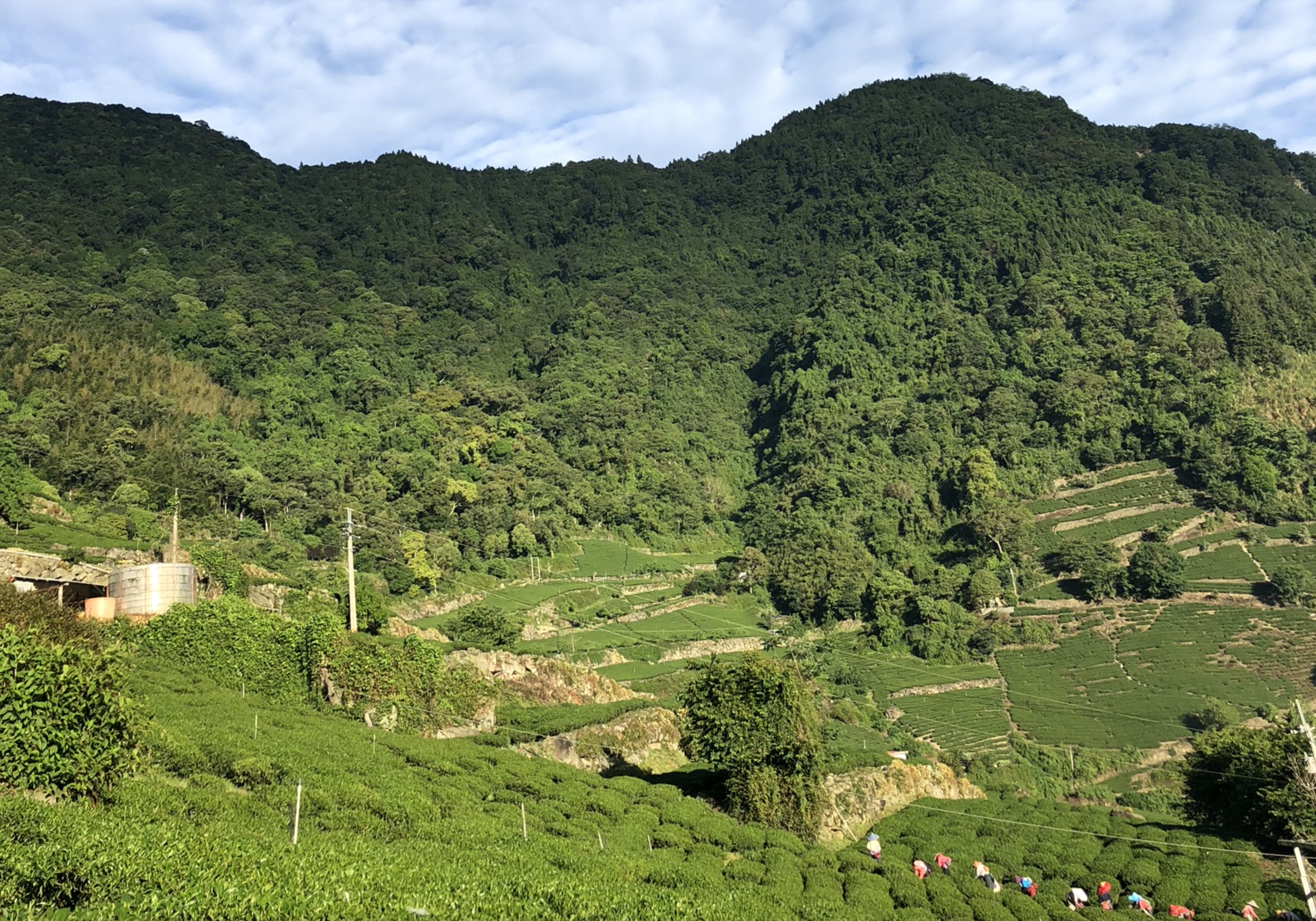The oolong tea making processUpdated 2 years ago

Outside (Sun) Wilting (shaiqing) Once picked, the tea leaves are laid out on large sheets (usually over the road or concrete slabs) where the conductive heat from the concrete and radiant heat fro the sun help to remove excess water from the leaves, assist in the breakdown of leaf proteins into free amino acids and, leaves and begin the process of oxidation. Depending on the intensity of the sunlight and temperature, outdoor wilting lasts from 30 minutes to one hour.
Indoor Wilting / Cooling (liangqing) To cool the leaves and slow down the wilting process, the wilting leaves are brought inside and placed on bamboo trays. This process allows for more accurate control of the wither and more even water loss and oxidization. The wilting leaves are typically turned every two hours for a period of 8-10 hours to achieve the desired level of oxidisation.
Tossing / disruption (yaoqing) Tossing is also known as “Zuo Qing” allows for the leaves to be placed into a barrel and tossed. This step helps to ruffle the edges and break down the cell structure of the tea leaves to help develop the flavour and fragrance of the oolong tea through oxidisation. The oxidisation helps to develop the green grassy aromas into floral characteristics, as well as soften the leaves as some moisture (up to 25%) and tea juices are also released during this process.
Oxidation / Fermentation During oxidisation, the chlorophyll in the leaves is enzymatically broken down and the tannins transformed. Oolong teas are typically oxidised for between 10% and 60%. Oxidation also develops the taste, aroma, liquor colour, briskness and strength of the tea. The speed of oxidisaton is generally determined by the ambient temperature and level of humidity, although technological improvements are now beginning to permit greater control over this process. The depth of oxidation is determined by the tea producer. The leaves of more heavily oxidsed teas present as being more reddish in colour.
Rolling / Shaping (rounian) Once tumbled and oxidised, the damp tea leaves are formed into strips by hand or more typically by use of a rolling machine. The rolling process helps to release the tea juices contained within the cells of the leaves which helps to create a more flavoursome tea when infused. For most oolongs, the wet strips are placed into tightly wrapped cloth bags (approximately 26kg at a time) and then compressed and rolled using a machine to create tightly rolled balls of tea (traditionally the balls were compressed and rolled under foot). The compressing and rolling of the teas was an innovation to allow traders to carry more tea with them, as compressed tea balls take up less space and less easily broken than strip style leaf. During the rolling and shaping process, the leaves are removed from the cloth and tumbled in a rotating cylindrical drum and sometimes lightly heated to separate the clumps of leaves and partially dry them. This step is repeated numerous times (up to 60!) for a period of eight to ten hours.
Fixation / Kill-green (shāqīng) is done by placing the leaves in a heated drum to destroy the function of the polyphenol oxidase enzymes in the leaves which halts leaf oxidation at a desired level.
Nitrogen Treatment is conducted for GABA tea (only). In this process exposed the wet tea leaves are exposed to nitrogen for 8-10 hours to increase the levels of Gaba butyric acid (Gaba-amino butyric acid is an amino acid which is natural growth hormone and tranquiliser that increases lean body mass, has a calming effect, lowers blood pressure and promote restful sleep).
Drying (ganzao): Helps to remove any excess water remaining in the tea leaves, intensify the flavours and allow for storage. Drying is usually done in 2 main stages, an initial firing and a second firing. During the first firing, the leaves are heated to more than 150°C for a short period (approximately 10 minutes). Then the leaves are aired for about half an hour to an hour before sending for the second firing. During the second firing (often in a different oven), the heat is reduced to circa 100°C and baked for less than 20 minutes and the process is considered complete.
Baking: For some teas, there is an additional baking step. Baking results in a spectrum of different taste profiles, depending on the baking time (4-6 hours) and temperature of the oven (usually between 90 and 105 degrees). Lighter floral aromatic flavors are attained by baking the tea at lower temperatures for shorter periods, more toasty and roasted oolong flavours are achieved by baking the tea at higher temperatures for longer periods. This baking process is also often repeated by tea traders wishing to increase the aroma of their tea or as part of the tea ageing process.
Sifting and de-stemming often follows after drying to remove debris and dust.